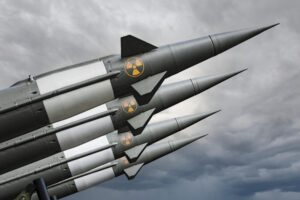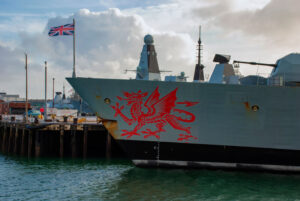It’s time to scrap the U.S. armed forces.
If you just spewed your Cheerios across the breakfast table, I should clarify. I’m not suggesting we abandon the military, beat our swords into ploughshares and become pacifists. But it’s time to overhaul how the nation organizes the military services by unifying the service departments into one warfighting component — the United States Defense Forces.
The current service departments are bureaucratic constructs that trace their lineage back to 1775, when there were just two domains — land and sea. There was very little in the way of joint operations back then, so having an Army and a Navy made sense. That status quo pretty much ruled until the National Defense Act of 1947, which separated the Air Force and the Marine Corps from the Army and the Navy, respectively.
This reorganization responded to the need for a new service to dominate a new domain: the air. But it evolved rather than revolutionized the existing structure. It left us with four services grouped into anachronistic silos, with borders between each one, limiting cooperation. It took the Goldwater–Nichols Department of Defense Reorganization Act of 1986 to streamline the military’s chain of command and allow operations to be conducted through the combatant commands, as we still do today.
An unintended consequence of the current structure is that their members are arguably loyal first to their respective service and second to the defense of the United States.
One of the Department of Defense’s common operating precepts is, “Achieve and maintain unity of effort within the joint force.” In reality, the services don’t want to cooperate with their rivals.
Something I learned when I served as a strategic planner on the Army staff at the Pentagon is that there is a deep level of mistrust among some members of the different service branches. And this mistrust gets in the way of providing the best national defense.
Service leaders may cooperate in wartime, but once the shooting stops, they devote themselves to ensuring their service gets as big a slice of the defense budget as possible, to the detriment of a cohesive fighting force, exemplified by Air Force Gen. Curtis LeMay, who is alleged to have said, “The Soviets are our adversary. Our enemy is the Navy.”
Even if the statement is an urban legend, it captures a mindset that remains stubbornly pervasive. It hurts all aspects of national defense, from research and development priorities to weapons procurement to training and operations.
Eliminating the service departments would be a huge first step in ensuring cooperation among the DOD’s 2.8 million personnel (active, reserve and civilian), improving efficiency during operations and giving the American taxpayer more value for the astronomical amount of money we spend on defense every year.
The USDF would be organized by domains, including a ground component, a maritime component, an air component, a space component and a cyber component. At the extremes of the rank structure, such as enlisted personnel and company grade officers at one extreme and flag officers at the other, there would be little change. People would still enlist for a specific job and stay in that career field until they were experienced sergeants/petty officers or captains/naval lieutenants, for about eight years of service.
At the other end of the rank structure, flag officers would still work at the joint level as they do now. Combatant commanders would request forces based on their function, just like they do now.
Big benefits to the nation’s defense and to taxpayers
Where the elimination of the service branches would offer sweeping benefit is in the opportunity to serve across domains in one’s career.
For example, let’s say an infantry officer starts his or her career at Fort Stewart, Georgia, with a mechanized battalion. Three years later they are promoted to captain and might decide to serve with an amphibious battalion based at Camp Pendleton, California, for three years, at which point the Department of Defense has an experienced leader who is versed in a wide range of maneuver operations.
His or her experience is both wide and deep. At this point, the officer would be able to choose an assignment where their leadership experience could be exploited, but at the same time allow them to serve in a segment of the military that would previously have been off-limits.
While an infantry officer would obviously be unqualified to serve as the executive officer on a warship, there are numerous staff positions within the naval or air components where they could bring their maneuver experience while learning how their peers operate in another domain. Such assignments would expose service members to different ways of doing business and give them an appreciation of the armed forces as a whole and not just their individual service.
In the vital support functions, such as personnel, communications, intelligence and logistics, there are even fewer obstacles to interoperability and an unlimited possibility of benefits. The skills used by professionals in these fields are overwhelmingly common, so that a personnel or communications specialist could move from one component to another throughout a career. At each stage there would be little need to become familiar with the new environment, but the service member would be exposed to new ideas and methods, experiences that he or she could take with them to their next assignment.
Over time, service members would accumulate these experiences and come to regard themselves as members of the U.S. Defense Forces first, rather than as a soldier, sailor, airman or Marine. When leaders plan a combat operation, there would be no need to consider jointness or to ensure each service’s equities were represented (or not). Jointness would be baked in.
In this imagined world of jointness, if national security strategy warranted bankrolling 20 aircraft carriers at the expense of several divisions of soldiers, that could be accomplished. Or budgeting for more divisions of soldiers at the expense of a new fleet of long-range bombers.
Such a thought experiment faces long odds from becoming reality. But members of the U.S. armed forces take an oath to defend the Constitution of the United States, not any given service’s budget. Our leaders should remember that.







